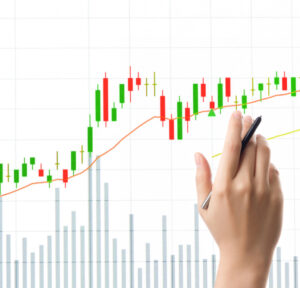Rand exchange rate: South Africa’s currency explained

The Southern African Common Monetary Area, which includes South Africa, Namibia, Lesotho, and Eswatini, uses the South African rand, or just the rand, as its official unit of exchange (currency). There are 100 cents in 1 Rand.
As members of the Common Monetary Area, Namibia, Lesotho, and Eswatini have their own national currencies tied to the rand at parity and are still extensively used as alternatives. The South African rand is considered legal tender in all three nations.
What is the Rand exchange rate?
The Rand Exchange Rate specifies how much one Rand is currently worth in terms of another currency via a currency calculator. Taking the USDZAR currency pair as an example, the U.S. dollars – South African Rand pair, the Rand Exchange Rate is how much 1 ZAR can be exchanged for 1 USD.
The Rand Exchange Rate is commonly determined by the economic activity, market interest rates, gross domestic product, and unemployment rate in South Africa and the other country involved. The elements mentioned above are routinely used to determine exchange rates in the global financial market, where banks and other financial organisations trade currencies continuously. Rate adjustments can be made hourly, daily, or even weekly and can be minimal or significant.
Track the markets up close. Join today>>
Why is the Rand exchange rate important to South Africa’s economy?
The rise or fall of the Rand Exchange Rate is essential to South Africa’s economy as it controls major factors like merchandise trade (import and export), economic growth, capital flow, inflation, interest rates, etc., that can either make or rattle the economy.
A weak Rand makes importation very expensive and exportation cheaper to countries with stronger currencies. A strong Rand makes importation cheaper and reduces the competition with exportation. Either side of the Rand Exchange Rate contributes to the trade deficit or trade surplus of South Africa with time.
Since the strength of an economy is reflected in its Gross Domestic Product (GDP), and the GDP is a function of the country’s net export, the Rand Exchange Rate determines how much exportation or importation South Africa can engage in.
The Rand Exchange Rate also dictates how much foreign investment flows into South Africa for economic growth since foreign capital mainly enters nations with stable governments, stable currencies, and dynamic economies. The Rand Exchange Rate also plays a significant role in the South African Reserve Bank (SARB) making decisions on the monetary policies that govern the nation’s financial system (i.e. higher or lower interest rates).
How has the Rand exchange rate changed over time: Cause and effect
Numerous regime changes characterise south African management of the exchange rate. The changes are rooted in several causes, of which the most important is the Apartheid and the political instabilities and international isolation that it induced.
South Africa has, until 2000, devoted significant attention to stabilisation measures in the domestic foreign exchange market as a coping strategy to economic and political crises the country faced due to its policy of Apartheid. It has done this through different changes to the exchange rate regime. These have ranged from fixed exchange rates in the 1960s and 1970s to experiments with floating rate regimes of various forms in the 1980s and 1990s.
Stringent exchange control regulations and regular market interventions by the South African Reserve Bank (SARB) accompanied the changes to the exchange rate regime.
In 2000, the country changed the monetary policy regime to inflation targeting. Under this new policy regime, the monetary policy aims at pre-announced inflation targets, with the interest rate as the instrumental variable for achieving them. This has essentially stabilised interest rates by making them more predictable.
However, exchange rate instability has continued. Since the mid-1980s, exchange rates of the rand have sustained a long swing of depreciation that reversed in 2002 only for a short while but resumed the swing in 2006 before another temporal reversal in 2009.
South Africa has maintained a floating currency regime, an effect that continued from the economic policies of the apartheid era. Policy directions from the South African Reserve Bank, activities of currency speculators, the politics in the country, the unrest and strikes on the labour front, the public sector debts and the increasingly erratic weather patterns affecting agricultural exports have all led to a conflicted history for the rand against major trading currencies.
What is the exchange rate US Dollar to Rand?
As of the time of writing, Q4 2022, 1 United States Dollar equals 16.95 South African Rand.
What factors influence the Rand exchange rate?
Some factors have a direct impact on the Rand Exchange Rate, among which are China’s economic stability, global uncertainty, and commodity prices.
The Rand is a commodity currency primarily because its parent nation is a vast commodity exporter (mainly platinum and gold). Therefore, the varying or stable prices of raw materials directly affect the Rand Exchange Rate.
How does the Rand exchange rate affect businesses in South Africa?
Changes in exchange rates affect businesses by changing the cost of supplies that are purchased from a different country and by changing the demand for their products from overseas customers.
What does the future hold for the Rand exchange rate?
There are a lot of factors, both internal and external, that will determine what the Rand Exchange Rate looks like in the coming years. The state of the nation, monetary policies that are adopted, global economic trends, trade partnerships, economic developments, interest rates, foreign investments, inflation, currency devaluation, and so on – all are combined as elements in the foreseen future.

Trade your favourite currency derivatives
This information is written by Klips. The information is provided for general purposes only and does not consider any personal circumstances or objectives. Before acting on this material, you should consider whether it is suitable for your circumstances and, if necessary, seek professional advice. No representation or warranty is given as to the accuracy or completeness of this information. It does not constitute financial, investment or other advice on which you can rely. Any references to past performance, historical returns, future projections, and statistical forecasts are no guarantee of future returns or future performance. Klips will not be held responsible for any use that may be made of this information and for any consequences that may result from such use. Hence, any person relying on the information on this page does it at their own risk.
Learn more, understand the markets
Learn

Top AI Companies to Watch: A Deeper Dive
ByAndreea
 3 min.
3 min.Learn

Charting Your Course to Trading Success with Klips
ByAndreea
 3 min.
3 min.Learn

Navigating the ECB’s Monetary Policy with Klips: Empowering Your Trading Strategy
ByAndreea
 3 min.
3 min.Learn

Harness the Power of Dollar-Cost Averaging on Klips Trading Platform Amidst a Bear Market
ByAndreea
 3 min.
3 min.Learn

Blockchain: The Future of Finance?
ByAndreea
 5 min.
5 min.Learn

AMC stock price – What Influences it the most
ByAdmin
 5 min.
5 min.Learn

What are trading signals?
ByAdmin

Trading

3 popular candlestick patterns for forex trading strategy
ByAdmin
 4 min.
4 min.Trading

Learn how simple forex trading is in South Africa
ByAdmin
 5 min.
5 min.Trading

The Warren Buffet of India: Find Out How Rakesh Jhunjhunwala Built His Fortune
ByAdmin
 7 min.
7 min.


